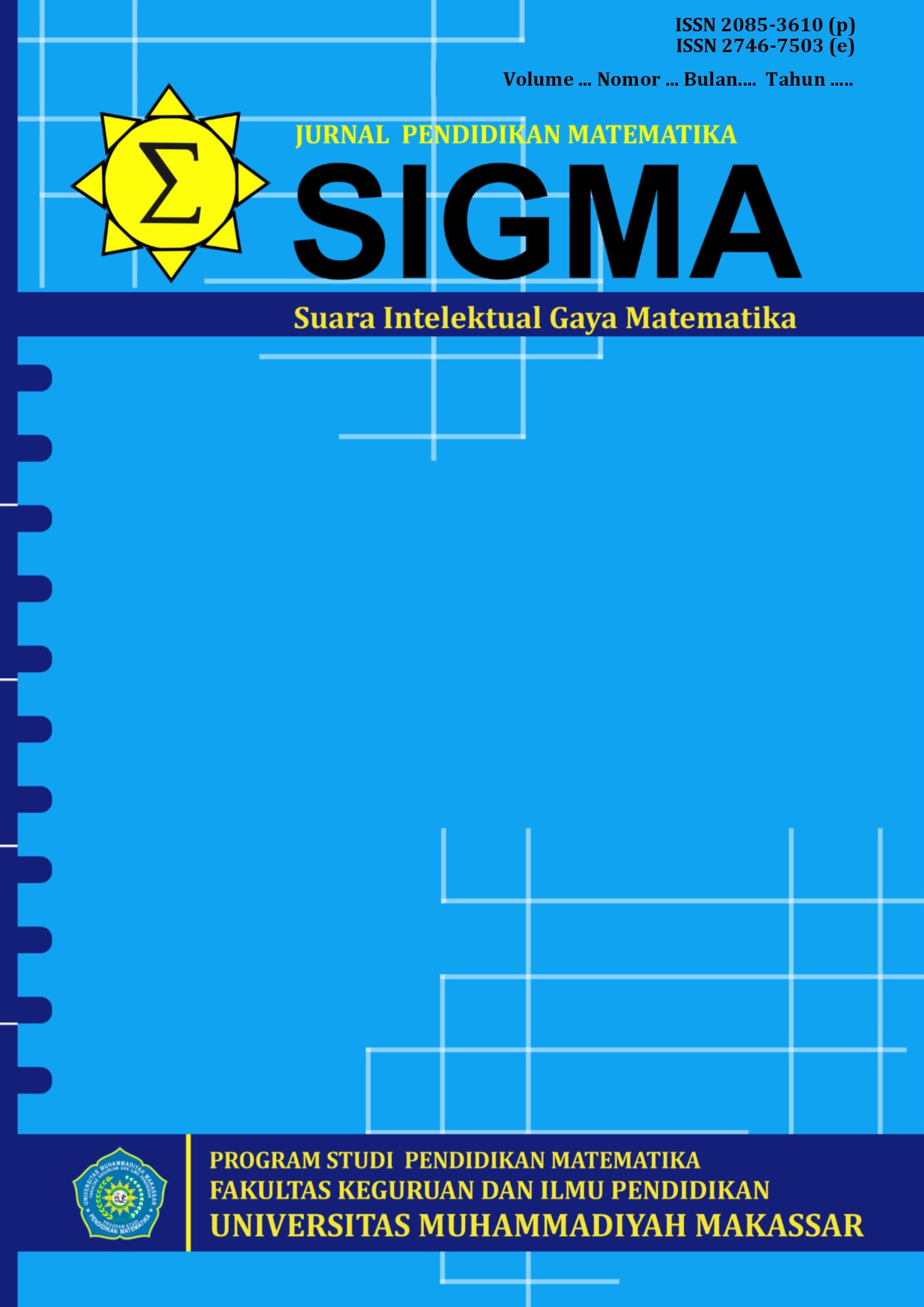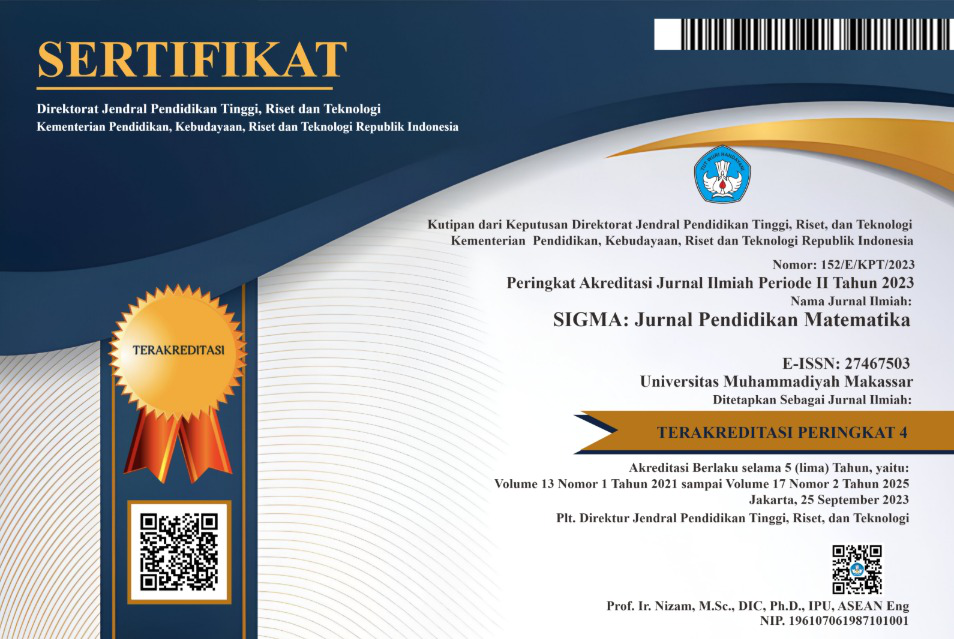PENERAPAN TEORI CLARK LEONARD HULL DALAM PEMBELAJARAN MATEMATIKA
DOI:
https://doi.org/10.26618/sigma.v13i1.4698Keywords:
clark leonard hull’s theory, mathematic learningAbstract
This study aims to assist teachers in identifying the application of Clark Leonard Hull's theory in mathematics learning. Clark Leonard Hull's theory suggests that biological needs (drive) and the satisfaction of biological needs (drive reduction) are in a central position in all human activities, so that the stimulus ) what happens in learning is almost always associated with biological needs, although the response that comes may take various forms. This theory argues that the learning process occurs due to the Stimulus-Response (SR) interaction. In Hull's theory, the most famous of which is the drive reduction theory which has 4 principles, namely (1) drive, (2) stimulus and response, (3) response, (4) reinforcement. If the Hull theory is applied to mathematics learning activities, it will make students more interested in learning and easily understand the material to be taught by the teacher. In its implementation there are six processes, namely (1) Determination of learning objectives to be achieved, (2) preparation in the process of achieving goals, (3) understanding the environmental situation of the subject to be taught, (4) interpreting the environmental situation based on the understanding obtained, (5) implementation of activities in achieving the goals to be achieved, (6) reflection.
References
Purnamasari, N. I. (2020). Siginifikansi Teori Belajar Clark Hull dan Ivan Pavlov bagi Pendidikan Islam Kontemporer. Jurnal Pendidikan Islam, 3(1), 1–24.
Muktar, M. (2019). Pendidikan Behavioristik Dan Aktualisasinya. Tabyin Jurnal Pendidikan Islam, 1(no 1 juni 2019), 30. iu.ac.id/index.php/tabyin/article/view/4%0A
Purnamasari, N. I. (2020). Siginifikansi Teori Belajar Clark Hull dan Ivan Pavlov bagi Pendidikan Islam Kontemporer. Jurnal Pendidikan Islam, 3(1), 1–24.
Islam, J. K., Pavlov, P., Hull, C., & Guthrie, E. (2016). AL-QALAM AL-QALAM. 8(2), 119–135.
Bahan, P., Matematika, A., Menengah, S., & Melalui, K. (2017). Pengembangan Bahan Ajar Matematika Sekolah Menengah Kejuruan melalui Pendekatan Mengikut Konteks. V(1), 111–116.
Ratnawati, E. (2016). Karakteristik Teori-Teori Belajar Dalam Proses Pendidikan (Perkembangan Psikologis Dan Aplikasi). Edueksos: Jurnal Pendidikan Sosial & Ekonomi, 4(2), 1–23.
Rusdi, M. (2017). Reaktualisasi Pendidikan Islam. Al-Riwayah: Jurnal Kependidikan, 9(2), 269–296. https://doi.org/10.32489/al-riwayah.143
Amsari, D. (2018). Implikasi Teori Belajar E.Thorndike (Behavioristik) Dalam Pembelajaran Matematika. Jurnal Basicedu, 2(2), 52–60. https://doi.org/10.31004/basicedu.v2i2.168
Gondra Romero, J. (2001). Clark L. Hull’s cognitive articles: a new perspective on his behavior system. Revista de Historia de La Psicología, 22(2), 113–134.
Gielen, A. C., & Sleet, D. (2003). Application of behavior-change theories and methods to injury prevention. Epidemiologic Reviews, 25, 65–76. https://doi.org/10.1093/epirev/mxg004
Keramati, M., & Gutkin, B. (2011). A reinforcement learning theory for homeostatic regulation. Advances in Neural Information Processing Systems 24: 25th Annual Conference on Neural Information Processing Systems 2011, NIPS 2011, 1–9.
Fithri, R. (2014). Buku Perkuliahan: Psikologi Belajar. Prodi Psikologi Fakultas Dakwah Dan Ilmu Komunikasi Uin Sunan Ampel Surabaya, 59-74.
Amir M.Z, Z. (2015). Pembelajaran Matematika Menggunakan. http://repository.uin-suska.ac.id/10388/1/Psikologi Pembelajaran Matematika.pdf
Nasution, M. (2015). Teori pembelajaran matematika menurut aliran psikologi behavioristik (tingkah laku). Logaritma, 3(1), 109–121.
Ismail, R. N., & Mudjiran, N. (2019). Membangun karakter melalui Implementasi Teori Belajar behavioristik pembelajaran matematika berbasis kecakapan abad 21. Menara Ilmu, XIII(11), 76–88.
http://jurnal.umsb.ac.id/index.php/menarailmu/article/view/1649
Nila, K. (2008). Pemahaman konsep matematik dalam pembelajaran matematika. Prosiding SeminarNasional Matematika Dan Pendidikan Matematika, Jurusan Pendidikan Matematika Fakultas Matematika Dan Ilmu Pengetahuan Alam Universitas Negeri Yogyakarta, 229–235.
Downloads
Published
Issue
Section
License
With the receipt of the article by the SIGMA: Jurnal Pendidikan Matematika Editorial Board and the decision to be published, then the copyright regarding the article will be diverted to SIGMA: Jurnal Pendidikan Matematika.
Universitas Muhammadiyah Makassar as the publisher of SIGMA: Jurnal Pendidikan Matematika hold the copyright regarding all the published articles in this journal.Universitas Muhammadiyah Makassar has the right to multiply and distribute the article and every author is not allowed to publish the same article that was published in this journal.
The manuscript authentic and copyright statement submission can be downloaded ON THIS FORM.






